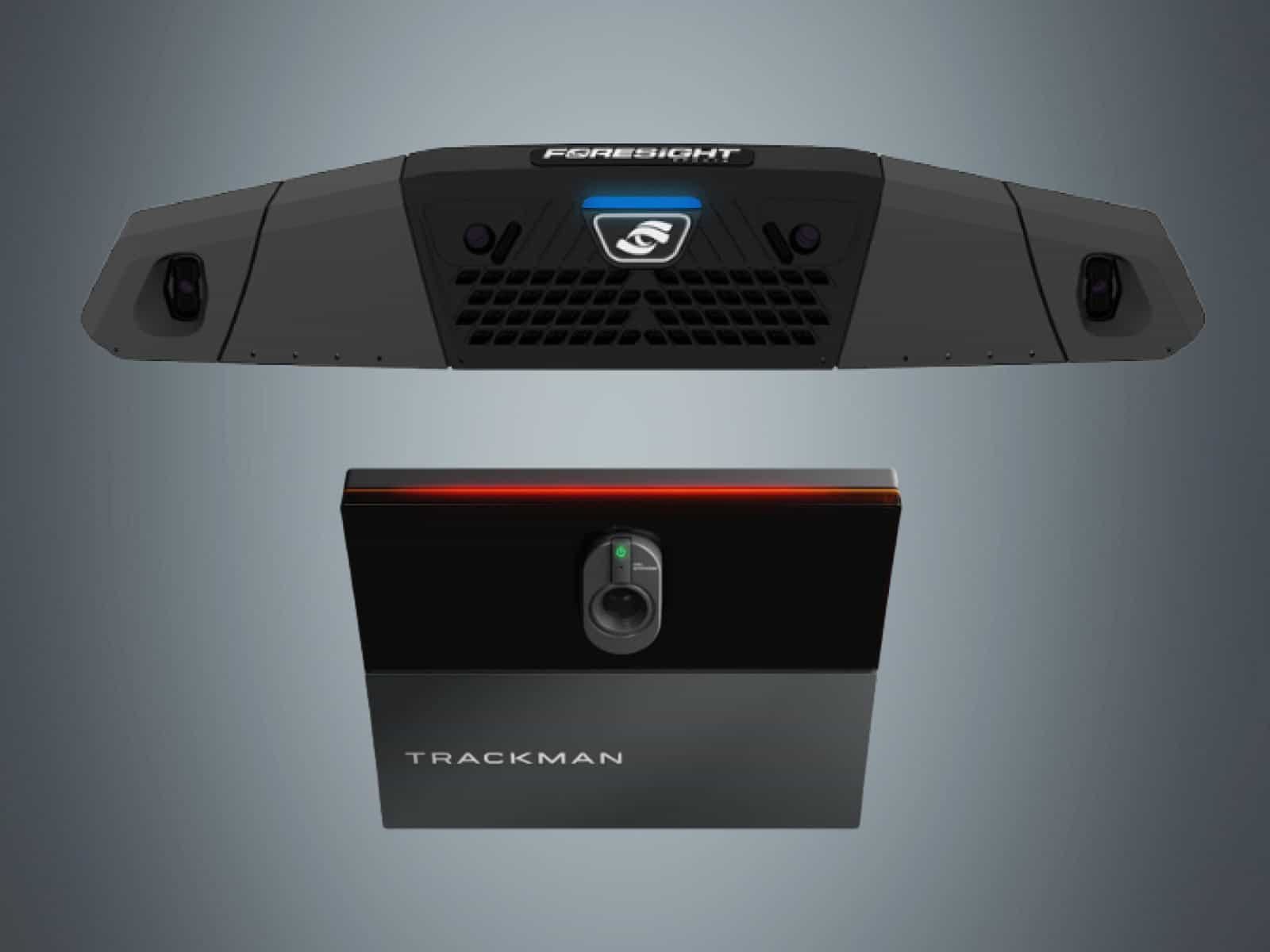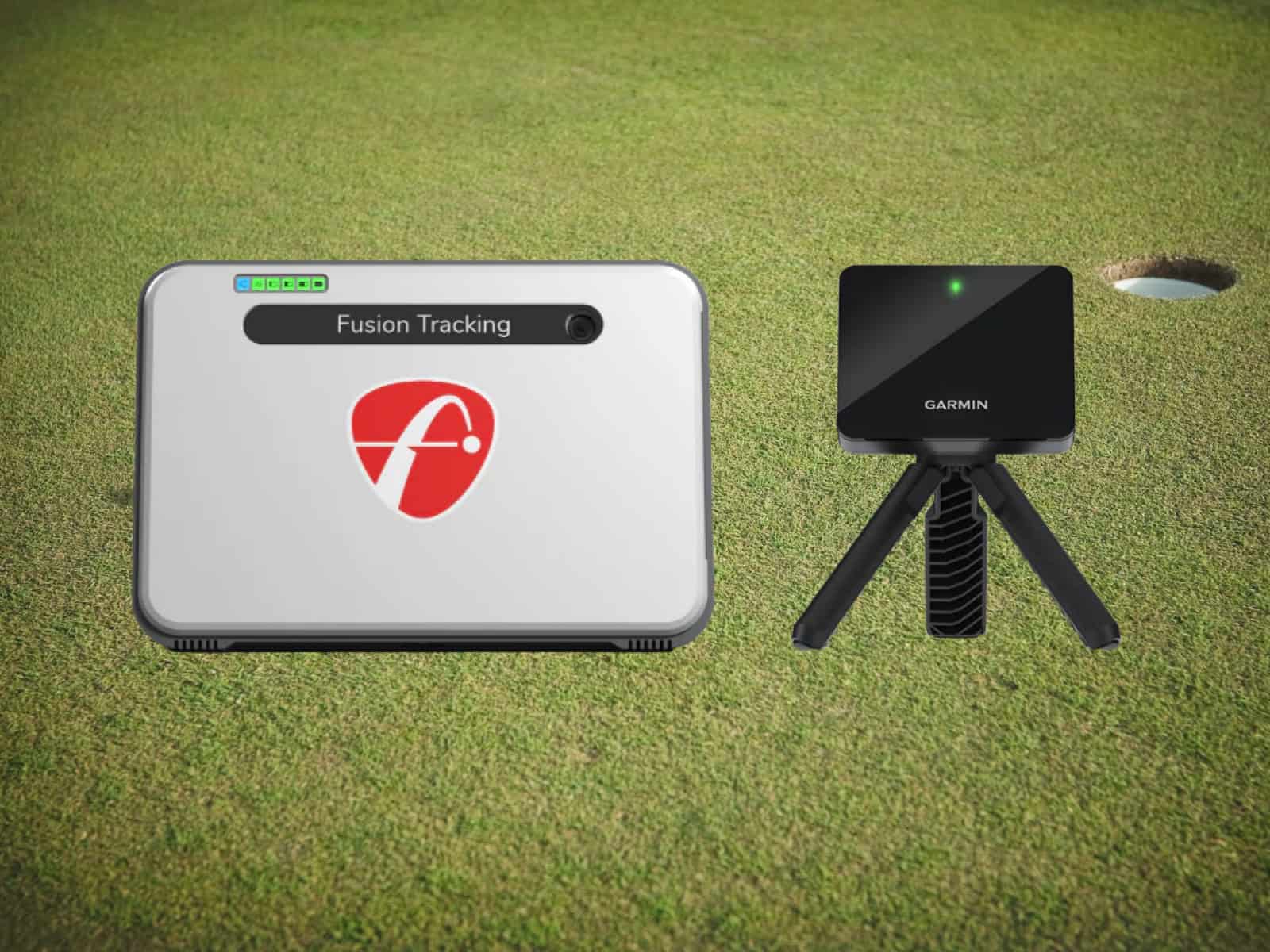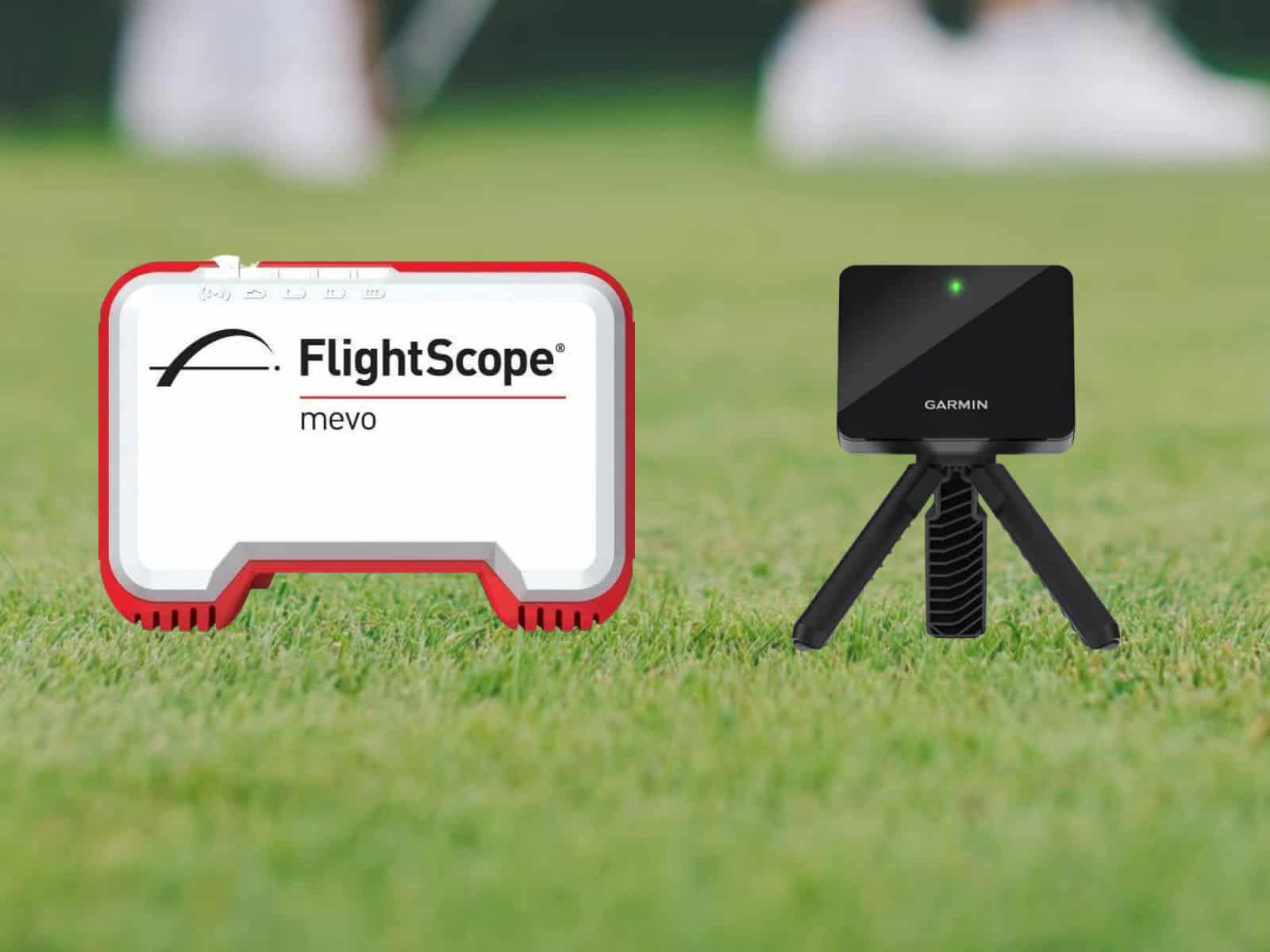If you’re serious about indoor golf and are building a simulator, two names should be at the top of your shortlist: the Foresight Falcon and the TrackMan iO. Both are premium overhead launch monitors designed for players who want pro-level data, but the way they deliver that experience—and how much they cost over time—differs significantly.
Choosing between them isn’t just about specs. It’s about what fits your space, budget and goals. Here’s a full comparison to help you make the right investment. You’ll see how the Falcon stacks up against the iO in tracking tech, software, user experience, cost, and setup requirements.
Quick Comparison: Foresight Falcon vs TrackMan iO
Both the IO and Falcon offer cutting-edge technology, professional-grade accuracy and immersive simulation experiences, but they approach performance, setup and long-term ownership very differently. Here’s a quick side-by-side comparison to help you start narrowing down the best fit for your space and needs.
| Feature | Foresight Falcon | TrackMan iO |
|---|---|---|
| Core Technology | Quadrascopic Camera System | Dual Doppler Radar + Optical Cameras |
| Club Data Tracking | Requires Stickers | No Stickers Needed |
| Software Compatibility | FSX Play, GSPro, E6 Connect | TrackMan VG2 Platform |
| Room Size Flexibility | Great for Tight Spaces | Needs More Room Depth |
| Subscription Model | No Annual Fees | Annual Subscription Required |
| Price Range | $14,999 | $13,995–$22,495 |
| Ideal User | Advanced Golfers and Enthusiasts | Commercial Facilities and Elite Players |
Target Audience and System Philosophy
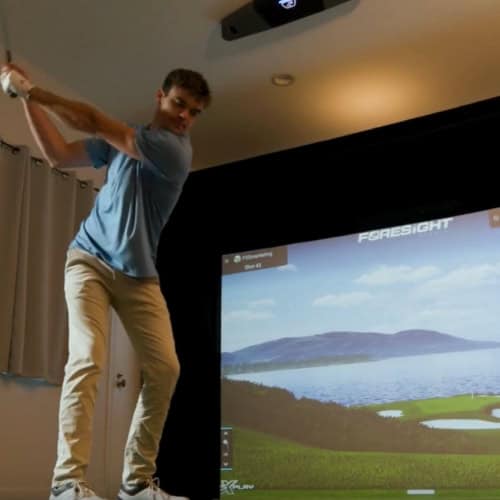
While both systems appeal to serious golfers, they are aimed at slightly different types of users.
The Foresight Falcon is clearly built for home enthusiasts and advanced players who want elite performance without stepping into commercial pricing territory. Its open software compatibility and no-subscription model are particularly attractive for those looking to control long-term costs while still enjoying top-level accuracy.
On the other hand, the TrackMan iO feels more at home in commercial environments—golf academies, club fitting studios and high-end home setups where users demand the absolute best. TrackMan’s name carries prestige, and the iO delivers detailed shot feedback and a polished experience, though with a hefty price tag and ongoing costs.
If you want (relative) flexibility and affordability, the Falcon is your system. If you’re after brand prestige, advanced visualizations and have the budget to support it, the TrackMan iO is extremely compelling.
Tracking Technology: Optical vs Radar-Optical Hybrid
The underlying tracking technology defines much of the experience.
The Foresight Falcon uses a quad-camera optical system based on the proven GCQuad technology. It captures the ball and club movement through high-speed, high-resolution cameras, offering pinpoint precision. Because it’s camera-based, it performs extremely well in confined indoor spaces, requiring less ball flight to deliver accurate data.
To better understand the capabilities of the Foresight Falcon, our Foresight Falcon launch monitor review can provide valuable insights into its performance, highlighting how it captures ball and club movement with pinpoint precision.
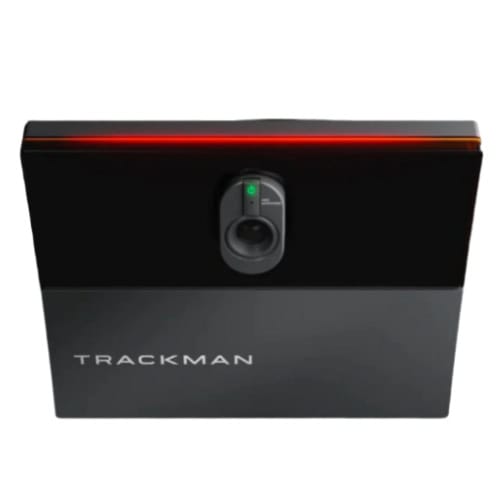
The TrackMan iO, by contrast, merges dual Doppler radar with optical cameras. The radar tracks ball flight with outstanding accuracy over a longer distance, while the cameras refine launch and impact measurements. This hybrid system excels particularly with fast swings and high ball speeds, but generally needs more space to fully track the ball’s movement.
If you’re working with limited space, the Falcon’s camera system will likely deliver better results. If you have plenty of room and want unmatched full-flight tracking, the iO shines.
Club Data Tracking: Stickers vs Sticker-Free
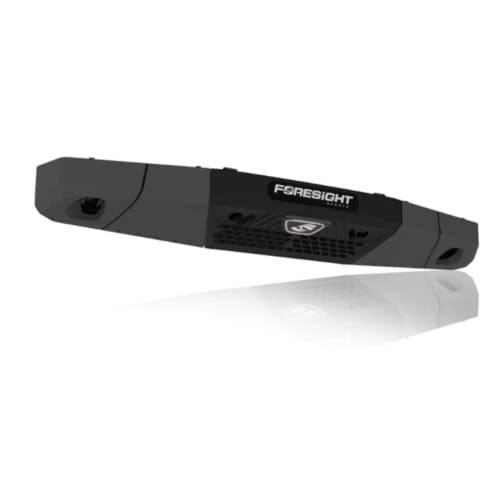
The Foresight Falcon requires reflective stickers placed on the clubface to capture detailed data like clubface angle, impact point and path. While applying stickers is simple and the included dispenser makes it easy, some users find it a slight inconvenience, especially if clubs are frequently rotated or shared.
In contrast, the TrackMan iO operates completely sticker-free. Thanks to its radar system, the iO can track clubhead movement without any additional accessories or setup steps. This sticker-free operation makes it especially attractive for teaching environments or facilities where many players use the same system throughout the day.
Setup and Space Requirements
Both the Falcon and TrackMan iO are overhead systems, meaning they need careful installation and sufficient space—but they differ in how demanding they are.
The Foresight Falcon is well-suited for home use, requiring a minimum ceiling height of around 10 feet and room depth of 14 feet or more. Thanks to its optical-only system, it doesn’t need extensive ball flight space, which makes it much easier to install in garages, basements or tighter indoor rooms.
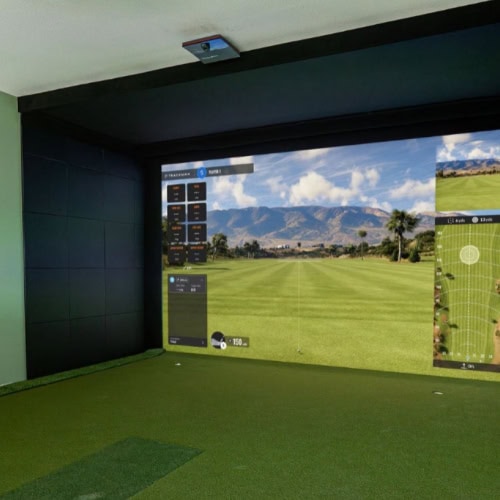
The TrackMan iO, because of its radar-based tracking, needs a bit more breathing room. Ideally, you should provide 15–18 feet of room depth and ceiling height of at least 10–12 feet to allow the radar to fully capture ball flight dynamics.
Installation practicalities:
- Falcon: Faster setup, easier for tight home spaces, automatic latch mounting system.
- iO: Professional installation often recommended, better suited for larger, commercial-grade rooms.
Software Ecosystem and User Experience
The Foresight Falcon offers one of the most flexible ecosystems on the market. It natively supports FSX Play, FSX 2020, GSPro, and E6 Connect, letting you pick from a range of visual styles, course libraries and game modes. You can easily mix simulation with serious training features, multiplayer games or pure practice sessions.
In contrast, the TrackMan iO is tied to the TrackMan VG2 platform. This system is polished to a professional standard, featuring stunning graphics, deep data analysis, Tracy AI coaching, and a smooth, intuitive user experience. However, it’s a closed ecosystem—you can’t easily integrate third-party software like GSPro or E6 Connect without custom workarounds.
Long-Term Ownership Costs
The Foresight Falcon has a straightforward financial model: buy the unit for $14,999 and you’re done. There are no mandatory subscriptions. You may later choose to purchase additional courses or software upgrades, but nothing is forced. This makes budgeting for the Falcon easy and predictable over several years.
The TrackMan iO comes with a subscription requirement. In addition to the initial $13,995–$22,495 purchase, you must pay annual fees—typically between $2,000 and $4,000—to maintain software access, updates and course libraries. Over five years, this can add tens of thousands of dollars to the total cost of ownership.
For users sensitive to long-term costs, the Falcon offers a clear advantage. For those prioritizing brand prestige and the absolute top-tier software ecosystem, TrackMan iO justifies its higher investment.
Real-World User Feedback
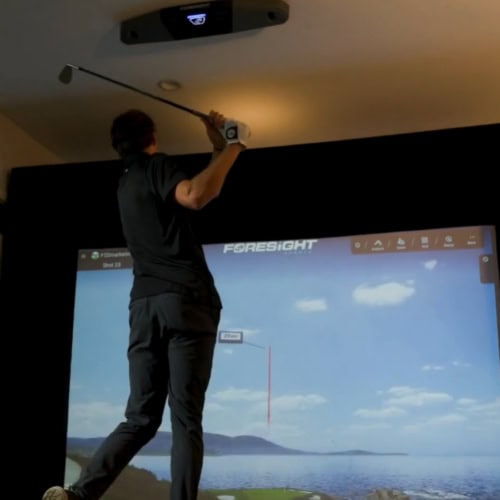
Falcon users consistently praise its incredible accuracy for the price, its ease of setup and its open software flexibility. Complaints, when they arise, usually focus on the need to apply stickers and occasional small glitches in third-party software connections.
TrackMan iO users rave about the visual quality of simulations, included coaching tools and industry-best ball flight data. However, frustrations often surface around the cost of ownership and the feeling of being locked into the TrackMan ecosystem, especially for players who prefer GSPro or other simulation experiences.
Where to buy?
You can get the Falcon and the IO launch monitors from the Foresight Sports and Trackman websites, respectively. There are also some reliable retailers that offer excellent customer service and financing options. Here are our recommendations:
For the Foresight Falcon
If you want complete setups with the Falcon launch monitor, make sure you check the following packages:
For the Trackman IO
We also recommend getting one of the following premium packages if you want to purchase a full setup:
Frequently Asked Questions
Here are some common queries about the Falcon and IO launch monitors. We provided answers to help you decide which unit is better for your needs.
Does the Foresight Falcon require stickers for every club?
Yes. The Falcon requires reflective stickers for full club data capture, including face angle and impact location. These stickers are small, inexpensive and easy to apply. While some users find it slightly inconvenient, they are crucial for unlocking the Falcon’s full club analytics.
Can the Foresight Falcon and TrackMan iO both run GSPro?
The Falcon is fully compatible with GSPro, giving you an affordable and highly realistic simulation option. The TrackMan iO, however, is tied to the proprietary VG2 platform. GSPro integration is not officially supported by TrackMan, and third-party workarounds may not deliver the same experience.
Is the TrackMan iO too expensive for personal home use?
For most home users, yes. The combination of a high initial cost and annual subscription fees means that the TrackMan iO is a major financial commitment. That said, if budget isn’t a concern and you’re seeking the highest possible fidelity in ball flight data, it is an outstanding option.
How often do I need to recalibrate these systems?
Both the Falcon and the iO require occasional recalibration to maintain accuracy, especially after physical movement, firmware updates or environmental changes. Falcon users typically recalibrate less often unless they notice data drift. TrackMan provides routine software prompts to assist in maintaining peak calibration.
Final Verdict – Which One Is Better for You?
If you are building a home simulator, want maximum flexibility and prefer not to deal with ongoing subscription costs, the Foresight Falcon is the smart choice. It gives you serious ball and club tracking accuracy, compatibility with multiple simulation platforms and a simple, predictable ownership experience.
When it comes to high-end golf simulation solutions, space and budget constraints often come into play. For those with limited bay space, a Trackman iO duo review can provide valuable insights into a dual launch monitor solution that can overcome these limitations.
If you are setting up a commercial facility, coaching students professionally or simply want the most sophisticated ball flight analysis and immersive simulation money can buy—and you are comfortable with ongoing subscription costs—then the TrackMan iO is unbeatable.
Both systems represent the cutting edge of golf simulation technology. Your decision ultimately comes down to space, budget and whether you prioritize flexibility or polished premium exclusivity.
Thanks for reading!


